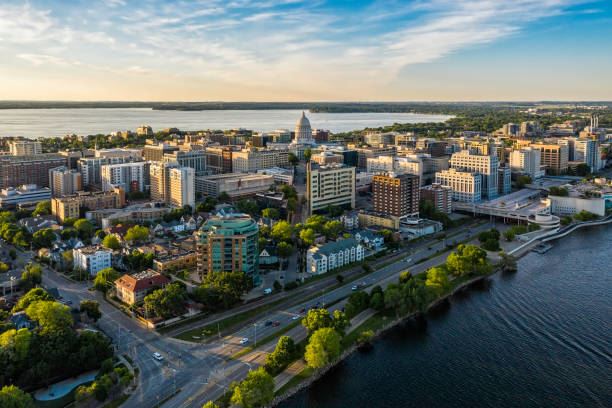
Alliant Energy, the City of Madison Fleet Service, Madison Gas and Electric and Wisconsin Clean Cities are again partnering to co-host the state’s largest sustainable transportation conference and expo.
“We’re excited to again co-host the Transportation & Innovation Expo with our partners,” Wisconsin Clean Cities Executive Director Lorrie Lisek said. “Helping fleets reduce emissions and improve their bottom line is what Wisconsin Clean Cities is all about. Whether you are just considering making a change toward low-carbon options or want to add to your sustainable fleet, our conference and expo will provide you with the tools needed to move your plans into action.”
The Transportation & Innovation Expo will take place on April 28 at the Exhibition Hall at the Alliant Energy Center, 1919 Alliant Energy Center Way in Madison.
“Alliant Energy strives to be a leader in electrification initiatives and embraces collaborative opportunities, like the Transportation & Innovation Expo,” said Michelle Yun, senior manager of strategy and electrification for Alliant Energy. “Collaborations such as these enhance our purpose-driven strategy to serve customers and build stronger communities. Whether we’re working on our own fleet electrification or electrifying our major corridors as part of the National Electric Highway Coalition, it’s just one more way we are driving toward a more sustainable future that benefits everyone. In the long-run, the customers and the communities we serve all benefit from a cleaner energy future.”
The event will offer multiple breakout sessions featuring the industry’s top leaders presenting on sustainable transportation choices. Topics range from incorporating electric vehicle and alternative fuel options into fleets, to state and federal programs and policies, vehicle outlooks for 2022 and beyond, sustainable choices for non-road equipment, sustainable options for bus fleets, electric vehicle and alternative fuel infrastructure and the roadway to municipal, business and industry fleet sustainability.
A luncheon panel discussion will feature leaders from state and federal agencies sharing insight into the availability of funding to support sustainable transportation options in 2022 and beyond through a variety of programs and legislation. Agencies scheduled to participate include the U.S. Department of Energy, U.S. Environmental Protection Agency, Federal Highway Administration, U.S. Department of Agriculture, Wisconsin Office of Energy Innovation, Wisconsin Department of Transportation, Wisconsin Office of Sustainability and Clean Energy and the Wisconsin Department of Natural Resources.
The 70,000-square-foot exhibit hall will feature a variety of exhibitors and indoor vehicle and equipment displays. Attendees will also have the opportunity to get behind the wheel of a variety of alternative fuel and electric vehicles during the ride and drive outside the exhibit hall.
“Madison Gas and Electric is pleased to partner and co-sponsor the Transportation and Innovation Expo,” said Debbie Branson, manager of electrification for Madison Gas and Electric. “More organizations are turning to electric vehicles to move people and products. Madison Gas and Electric can help businesses transition their fleets, which can reduce costs and enhance sustainability. The Expo is an opportunity to learn more about the benefits of going electric.”
Among the vehicles and equipment scheduled to be on hand are an electric recycling and refuse truck, a compressed natural gas shuttle bus, compressed natural gas snow plows, a hybrid street sweeper, a clean energy electric vehicle charging station, a propane F-150, an electric transit bus, a biodiesel plow truck and a variety of electric passenger vehicles, motorcycles, bicycles and much more.
“The Transportation & Innovation Expo will be a celebration of the emerging global leadership displayed by South Central Wisconsin in the sustainable fleet industrial complex involving government agencies, private companies, utilities, educational institutions and nonprofits working together to turbocharge carbon dioxide reduction,” said Mahanth Joishy, superintendent of the City of Madison Fleet Service. “We are just at the beginning of this exciting revolution and the City of Madison is proud to work with our partners to host guests from down the road to across oceans and borders, in what I expect will be the best and most unique sustainable transportation gathering ever held in the United States.”
Access to the expo hall and the ride and drive is free and open to the public throughout the day. Paid registration includes breakout sessions, continental breakfast, lunch, refreshments, access to exhibit booths and vehicle/equipment displays and the ride and drive as well as a networking reception in the Expo Hall the evening of April 27. Fleet managers receive all the benefits of paid registration free of charge, but pre-registration is required.
Registration and more information is available online at www.wicleancities.org.
https://www.wispolitics.com/2022/wisconsin-clean-cities-transportation-innovation-expo-2022-set-for-madison/

